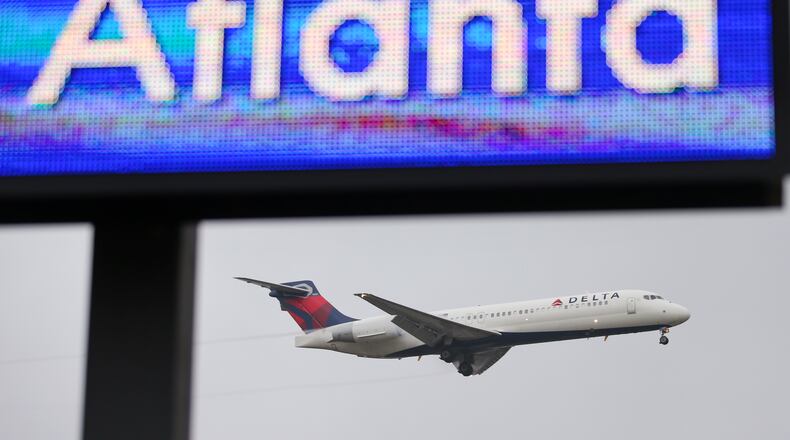If you flew in or out of Atlanta in 2015, you had a roughly one in six chance of having a delayed flight.
With more than 100 million passengers flying in and out of Atlanta in 2015, that means some 15 million encountered flight delays at Hartsfield-Jackson International Airport last year.
Winter storms can cause widespread delays and cancellations, as seen last winter and just last week in Atlanta.
On the other hand, close to 85 million Atlanta passengers' flights were on time, based on the on-time arrival statistics for 2015 from air travel intelligence company OAG.
Credit: Kelly Yamanouchi
Credit: Kelly Yamanouchi
Atlanta's airport, with an average on-time performance of 84.38 percent in 2015, ranked eighth among the world's large airports for punctuality in OAG's report. In first place was Tokyo's Haneda Airport with 91.25 percent on-time performance.
Atlanta-based Delta Air Lines ranked fourth among North American airlines for on-time performance with an average rate of 84.46 percent last year, OAG data showed.
"For business travelers it's very important... particularly when you're going through a hub airport where you always have in the back of your mind, 'Will my connecting flight be there?'" said OAG senior analyst John Grant.
Delta several years ago had dismal operational performance figures, but in recent years has focused on improving and managed to climb up the rankings significantly. On-time performance is "a very positive thing to be able to promote," Grant said.
Among North American airlines, Delta came in behind Hawaiian Airlines in the No. 1 position with 89.11 percent on-time performance, Alaska Airlines in 2nd place and Canadian low-cost carrier WestJet in 3rd.
Those three higher-ranking airlines are smaller, making Delta the highest-ranking major legacy carrier in North America. Still, Delta didn't make OAG's top 20 list for mainline airlines worldwide.
The congestion of the airspace in the United States and the complexity of airline hub-and-spoke operations here can contribute to delays, according to Grant.
"The potential for a delay or something to occur at one of those hubs that subsequently impacts another hub is quite high during the course of a 14-hour or 15-hour (operating) day," Grant said.
Smaller airports often have fewer constraints and less congestion, he said. On the flip side, having fewer flights means "you only need a couple of things to go wrong" to affect on-time performance figures significantly.
About the Author
Keep Reading
The Latest
Featured




